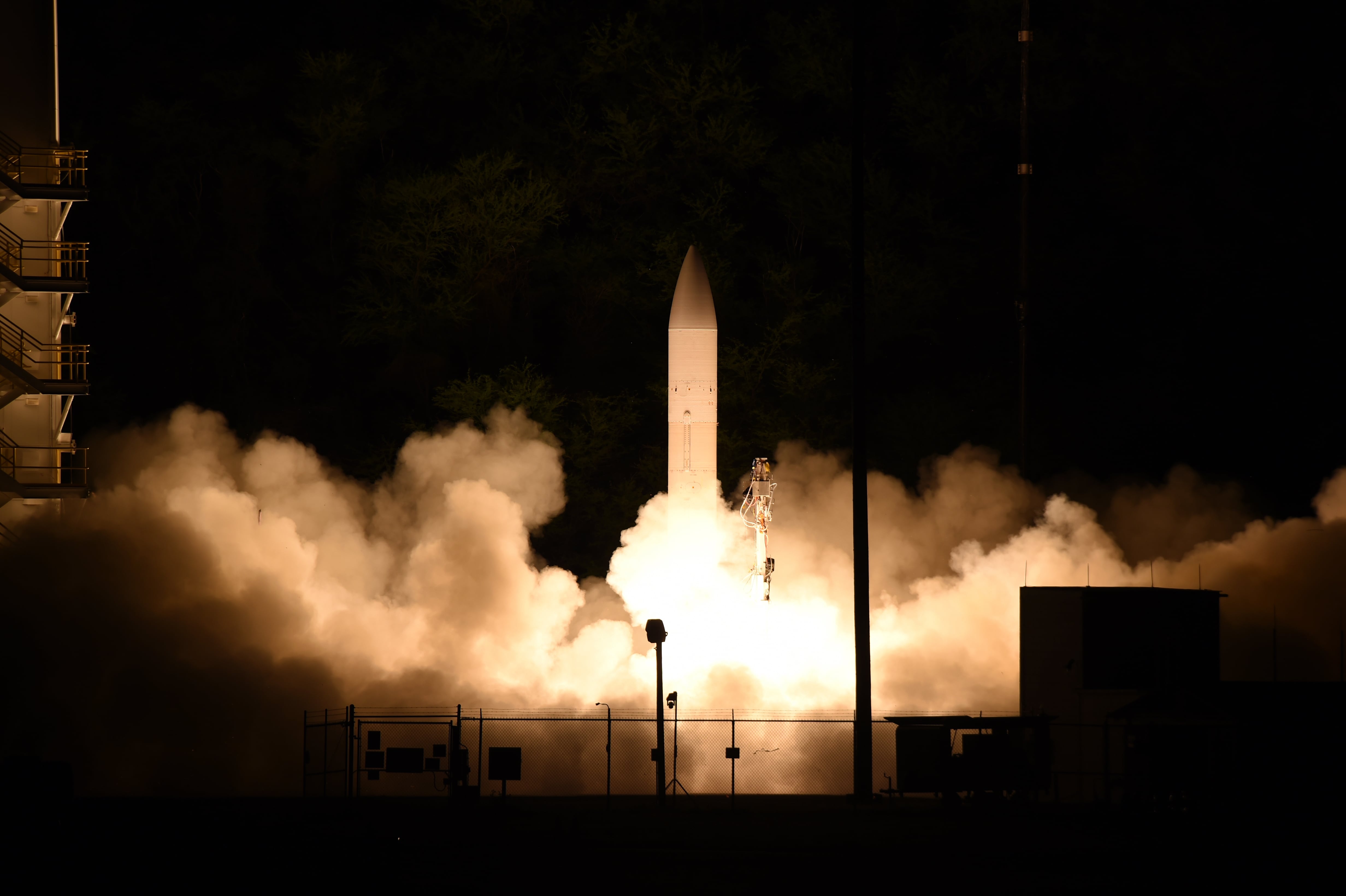WASHINGTON — The U.S. Defense Department hopes Congress will approve a change in how it funds the next-generation intercontinental ballistic missile in order to avoid what the department views as unnecessary contract bureaucracy.
Appearing before the Senate Armed Services Committee last week, Pentagon acquisition head Ellen Lord said the Ground Based Strategic Deterrent program was moving along as planned, but she indicated that a military construction issue remains unsolved.
“We do have a lot of money allocated through the MILCON [military construction] methodology, and whereas we have 500 separate items that need to be updated, that would be rather onerous to have 500 different or so projects,” Lord said. “We’re looking at consolidating that, to streamlining it.”
“So we’re very, very interested to see what comes out of conference, but we would ask [Congress] that we move some of that money out of MILCON to give us the flexibility on the program execution side to move forward along the timelines,” she added. “Our job in acquisition and sustainment [is] to not transition programmatic risks over to operational risk, and I’m afraid if we don’t move some of that money out of MILCON, that’s exactly what we would be doing.”
RELATED

While discussions around the GBSD program often focus on the missiles themselves, each of the 450 existing Minuteman III ICBM launch facility locations, as well as up to 45 launch center sites tied to the current ICBM infrastructure, must be redone to accommodate the new capability. Everything from the physical buildings at the staging areas above the launch sites to the doors and missile suspension systems inside the silos would require updates.
Under current requirements, the Pentagon must report and budget each of the nearly 500 different building locations — spread across three operational wings, five states and 31,5000 square miles — as their own military construction cases.
Given that the same scope of work would be happening at multiple locations, the department believes it simply makes sense to combine those into one pot of money for ease of planning.
Should that not happen, there could be delays in updating and preparing the silos for the GBSD program on time, warned Pentagon spokeswoman Jessica Maxwell, who said in a statement to Defense News that the conversion from Minuteman to GBSD “must occur on a precise timeline to maintain the operational readiness of ICBMs.”
To hit the planned full operational capability date of 2036, Maxwell said, the Air Force must convert one launch facility per week for nine years. Things get complicated by the fact that some of the Minuteman ICBMs are set to age out of service during this period, meaning Pentagon planners are nervous that any delay could lead to a degradation of ICBM capability, including the goal of having 400 missiles on alert at all times.
That level of synchronization will not be possible “if authorities and responsibilities for the conversion effort are split over multiple contractors, as required by current law,” Maxwell said.
RELATED

As a result, the Air Force submitted a fiscal 2021 legislative proposal that would allow the use of research, development, testing, engineering and missile procurement funding to cover conversion costs for the launch facilities and centers. But Lord’s team is working with Congress to see if there are options for new legislative language that would allow the projects at one installation — say, all the launch facilities tied to F.E. Warren Air Force Base in Wyoming — to be combined into one contract.
Todd Harrison, a budget expert with the Center for Strategic and International Studies, said the Pentagon’s request “makes perfect sense,” as the traditional MILCON funding " would be excessively burdensome" for the project.
“They would have to break the funding up by each individual site, which would mean about 500 different MILCON projects for this one program. If they could centralize this funding in one account (or fewer accounts) it would allow more flexibility to reallocate funding as necessary between sites and to manage the program in a more coordinated manner,” he said.
However, the way forward may be tricky, Harrison warned. MILCON appropriations go through appropriations subpanels focused on military construction and veterans affairs; meanwhile, research, development, testing and engineering funding flows through the defense subpanels. And crossing jurisdictional lines often creates problems in Congress.
Aaron Mehta was deputy editor and senior Pentagon correspondent for Defense News, covering policy, strategy and acquisition at the highest levels of the Defense Department and its international partners.








